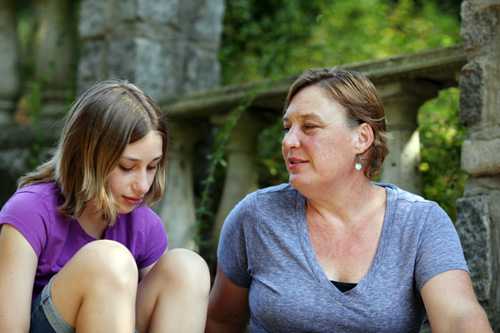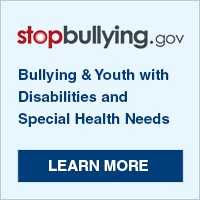Bullying

Bullying doesn’t just happen to the smallest kid in the class. Children who bully others target those who seem to be less powerful or not as strong. Children who bully others also often target children who seem “different”. Children with disabilities are sometimes more likely to be bullied than children without disabilities.
Learn more about the effects of bullying, what adults can do to help prevent bullying, and where to find additional resources.
Bullying, teasing, and harassment should not be considered normal rites of passage or “kids just being kids”. The effects of bullying can be serious, including depression, low self-esteem, health problems, and even suicide. Adults can help prevent bullying by teaching children about bullying, giving them tools for what to do if they are being bullied, and taking steps to protect children’s legal right not to be bullied.
What is bullying?
Bullying is unwanted, aggressive behavior that involves a real or perceived imbalance of power. The aggressive behavior is repeated, or has the potential to be repeated, over time.
Types of Bullying
There are three types of bullying:
-
Physical
Physical bullying involves hurting a person’s body or possessions. Physical bullying includes: hitting/kicking/pinching, spitting, tripping/pushing, taking or breaking someone’s things, and making mean or rude hand gestures
-
Verbal
Verbal bullying is saying or writing mean things. Verbal bullying includes: teasing, name-calling, inappropriate sexual comments, taunting, and threatening to cause harm.
-
Social
Social bullying, sometimes referred to as relational bullying, involves hurting someone’s reputation or relationships. Social bullying includes: leaving someone out on purpose, telling other children not to be friends with someone, spreading rumors about someone, or embarrassing someone in public.
Verbal and social bullying also can come in the form of electronic aggression (e.g.,, cyberbullying using the Internet or cell phones). It can include threatening, embarrassing, or insulting emails, texts.
The Effects of Bullying
Children and youth who are bullied are more likely than other children to:
- Be depressed, lonely, and anxious;
- Have low self-esteem;
- Experience headaches, stomachaches, tiredness, and poor eating;
- Be absent from school, dislike school, and have poorer school performance; and
- Think about suicide or plan for suicide.
Some children with disabilities have low self-esteem or feel depressed, lonely or anxious because of their disability, and bullying may make this even worse. Bullying can cause serious, lasting problems not only for children who are bullied but also for children who bully and those who witness bullying. Read more about the effects of bullying.
What Can We Do?
Parents, school staff, and other caring adults can help prevent bullying. They can do the following:
-
Explain Bullying
Children do not always know when they are bullied. They might feel bad, but don’t know how to talk about it. Children with disabilities that affect how they think, learn, or interact with others might need a very detailed explanation about how to recognize bullying when it happens to themselves or others. Get more tips about how to talk about bullying.
-
Teach Children What To Do
Children need assistance in learning what to do to protect themselves from bullying and to help others who are being bullied. They might need:
- Very specific instructions that are tailored to them, particularly if they have disabilities that affect how they think, learn, or interact with others.
- To be encouraged to always reach out to a trusted adult.
- To learn to recognize and avoid situations where bullying occurs.
Here are ways to teach children how to respond to bullying:
- Talk with them often about what they have experienced and thinking about different ways they could respond.
- Practice with them on how to act and respond to bullying, including by using role plays.
- Suggest ways to respond to children who bully others, including telling them to stop, use humor, walk away, and get help. Get more tips about how to respond to bullying.
Children might not always know when they are bullying another child. Children whose disabilities impact their thinking, learning, or social skills might need extra help learning how to express themselves with respect to others.
-
Protect Your Child’s Legal Rights
Your child has the right not to be harassed by peers, school personnel, or other adults. Disability harassment is discrimination that violates section 504 of the Individuals with Disabilities Education Act (IDEA) and its regulations. Titles II and III of the Americans with Disabilities Act also address harassment. Find out more information about federal laws related to bullying on StopBullying.gov.
Find more information about disability harassment from the U.S. Department of Education »
Resources
- These sites have information from the Centers for Disease Control and Prevention.
- The following sites have information from the Health Resources and Services Administration (HRSA) about bullying and tips to make it stop.
- These sites have information about bullying for schools, parents, kids, and teens.
- Page last reviewed: July 14, 2017
- Page last updated: July 14, 2017
- Content source:




 ShareCompartir
ShareCompartir
